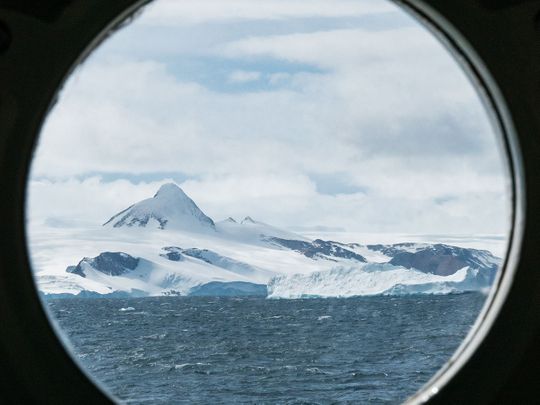
Our planet is made of 71 per cent water – a swirling blue mass that we humans have split up into four oceans. Last year, a fifth ocean was officially recognised by many countries… a body of water at the bottom of the Earth.
Click start to play today’s Spell It, where “ocean” is one of the words you can make, from the 44 options available to you.
Historically, countries around the world have recognised four oceans – the Atlantic, Pacific, Indian and Arctic. But on World Oceans Day (June 8) last year, a fifth ocean was officially added to the roster by many countries: the Southern Ocean. This newest addition to the ocean fraternity was recognised by the US Board on Geographic Names as the body of water extending from the coast of Antarctica to the line of latitude at 60 degrees South. However, not all countries agree to the proposed boundaries, so the Southern Ocean has one last hurdle to pass before it becomes a full member – it has to be ratified by members of the International Hydrographic Organisation.
For decades, geographers around the world have debated whether the waters around Antarctica were unique enough to deserve their own identity, or whether they were just icier, southern extensions of existing oceans. But in a world that’s facing a climate crisis, the Southern Ocean is becoming a region that’s in dire need of attention and conservation. So, naming it is a good start.
According to a June 2021 report in National Geographic, while other oceans are defined by the continents that surround them, the Southern Ocean is defined by a single current. Termed the Antarctic Circumpolar Current (ACC), it came into existence nearly 34 million years ago, when Antarctica separated from South America, allowing the free flow of water around the bottom of the Earth.
The ACC is colder, and less salty than other oceans. And it transports more water than any other ocean current. It pulls in water from the Atlantic, Pacific and Indian Oceans, helping to power a global water circulation system that conveys heat around the planet. The Southern Ocean also helps cold, dense water sink to the ocean floor, allowing for the storage of carbon in the ocean depths.
The Southern Ocean also plays an important role in ecology. By fencing in the ice-cold southern waters, it helps keep Antarctica cold, and preserves its habitat. It is home to thousands of species that live nowhere else. And it also supports marine life that visit its shores – for instance, humpback whales feed off krill in Antarctica and migrate north in the winter to South America.
As important as it is for the Earth, it is also one of the oceans that is suffering the most from human-driven climate change. Water moving through the ACC is warming, and the rapid melting of Antarctica’s ice sheets often occurs close to this current. The impact of industrial fishing on species like krill and Patagonian toothfish is also a concern in the Southern Ocean.
Scientists think that giving the ocean a name and establishing a place for it on the map will help in promoting its conservation.
What do you think could be done to protect the newest ocean? Play today’s Spell It and tell us at games@gulfnews.com.







